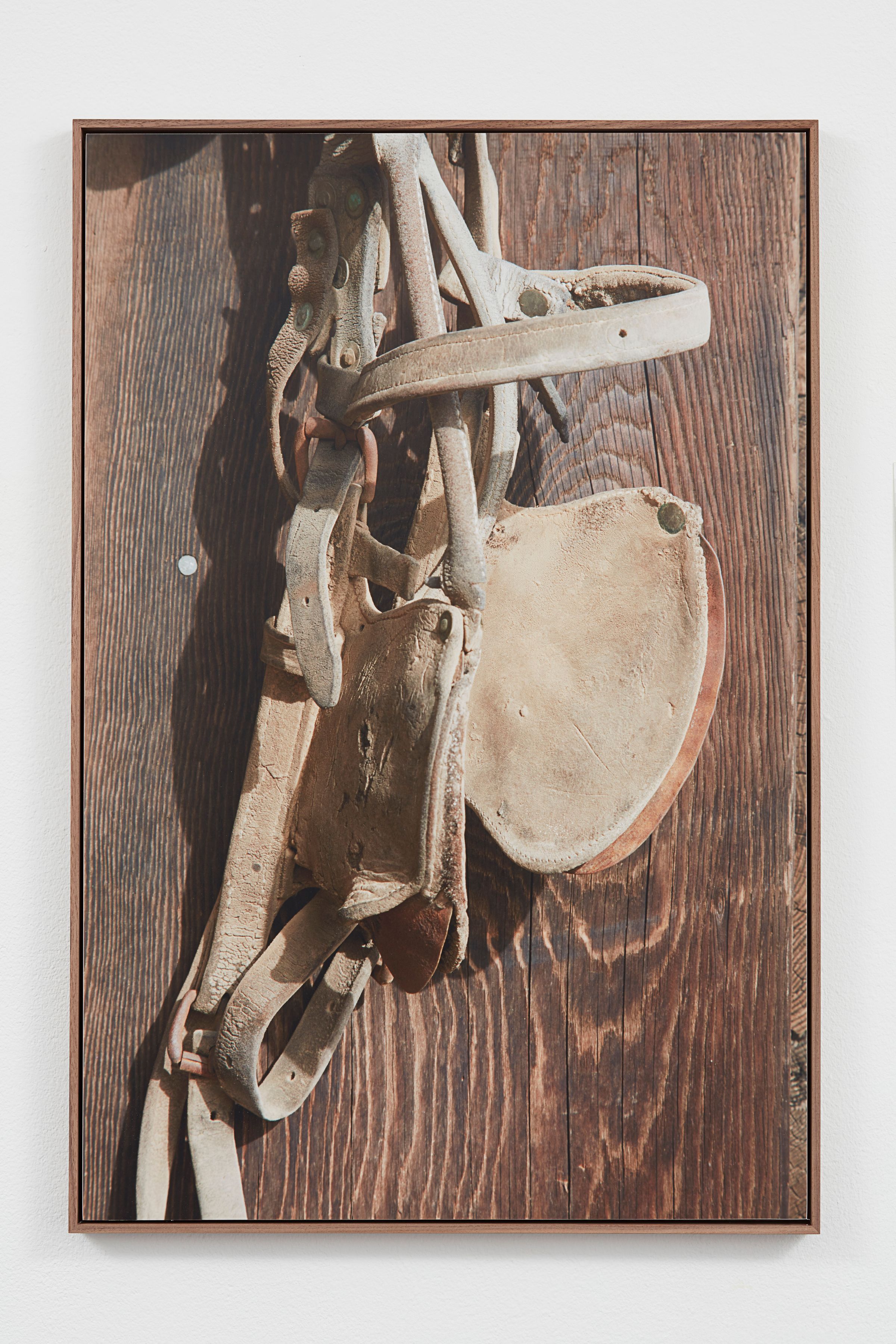2016
Heck & The Divested Set
Sandy Brown, Berlin, Germany
14 September–12 November, 2016


The Divested Set
Towns are approximations, this one especially. Pioneertown models an 1870 American frontier town built in 1946. It was then, and is now, a live-in set. Founded by a cowboy, a villain actor, a gossip columnist and a singing troupe, Pioneertown served as both housing for cast and crew and backdrop for genre films – complete with post office, bowling alley and saloon; with stables without horses, jails without prisoners, farm equipment that rusted in arid land or arrived with patina. The set and props, in equal parts, stand in as objects of recent settlement and hasty desertion. Pioneertown still serves as housing for residents, it still serves as a set for reenactments and the rare commercial. Occasionally, a cos-player will walk the street in spurs. But is it only cos-play out of context? While not much has been filmed around these parts, that doesn't mean it's not still as it has been – a live-in set.
Back Trail
Kiss the Blood Off My Hands
The Valiant Strain
The Lusting Breed
Heritage of Conflict
The Valley of Dispute
Hell is Full of Heroes
Moments in Heck
In February of 2015 I arrived in Pioneertown at sunrise, having driven 125 miles from Los Angeles with two friends, both photographers. Looking at the photographs I’d taken that day, it seemed that either of them could have created identical images. A latent image is inscribed in each set. They then become stand-ins, props – as placeholder images in rustic wooden frames, or as printed canvases hung in a living room surrounded by Restoration Hardware. But instead they are here in Berlin.
In February of 2016 I stood in Pioneertown during a particularly radical sunset. I photographed the sunset on my phone, the old Western set silhouetted against it. Stock photography is no longer the stand-in it was intended to be. It was intended to have a level of general specificity (details without context or connotation) that allows the image to serve many masters. Now these images are prisoners of their genre. User-generated-content (UGC) is now more frequently used in the roles once played by stock photography. In the late nineteenth century, the U.S. Geological Survey commissioned William Henry Jackson and Timothy O’Sullivan to create exemplary images of American landscapes. Being the first half-century of the medium, these images also became exemplary of landscape photography itself. These singular individuals created the average, while UGC creates an average from a larger data set. In a sense, UGC of a specific site becomes a democratic exercise in extracting a latent image. Though, it is an average that can be easily broken back down to its discreet parts, which can then, when posted and indexable, be used to demonstrate “authenticity,” or used as proof that someone found value in that “moment.”
It’s called endless but that doesn’t mean it’ll last.
I inherited two things from my grandparents – a Ziploc bag of bolo ties and a 1930 Workmen’s Circle lesson book for children:
The eager mouse
The mischievous dog
The overworked horse
“Lying in the field is a horse’s head Mazela-Grazele runs by...
"Shtibele Tourmel! What a Riotous Turmoil! What happened to you?
Did no one wake you up? It’s Mazele-Grazele left in in riot and wishing you a good life.
Bring some light over here Little Nose:
Shtibele Tourmel! What happened to you?
I am Maizele-Grazele. And Who are you?
I am the little old Little Nose.
Come spend some time with me.
And we will have a nice time being alive together.









